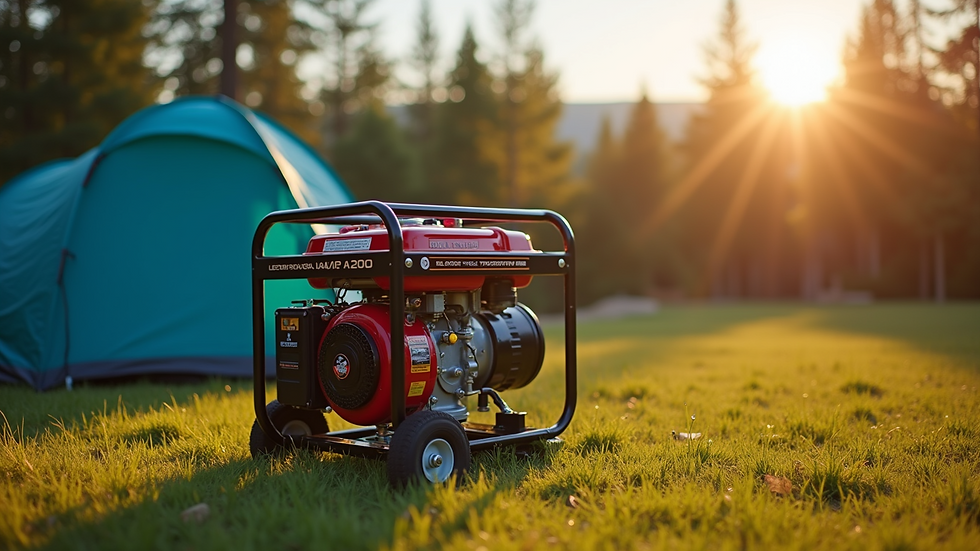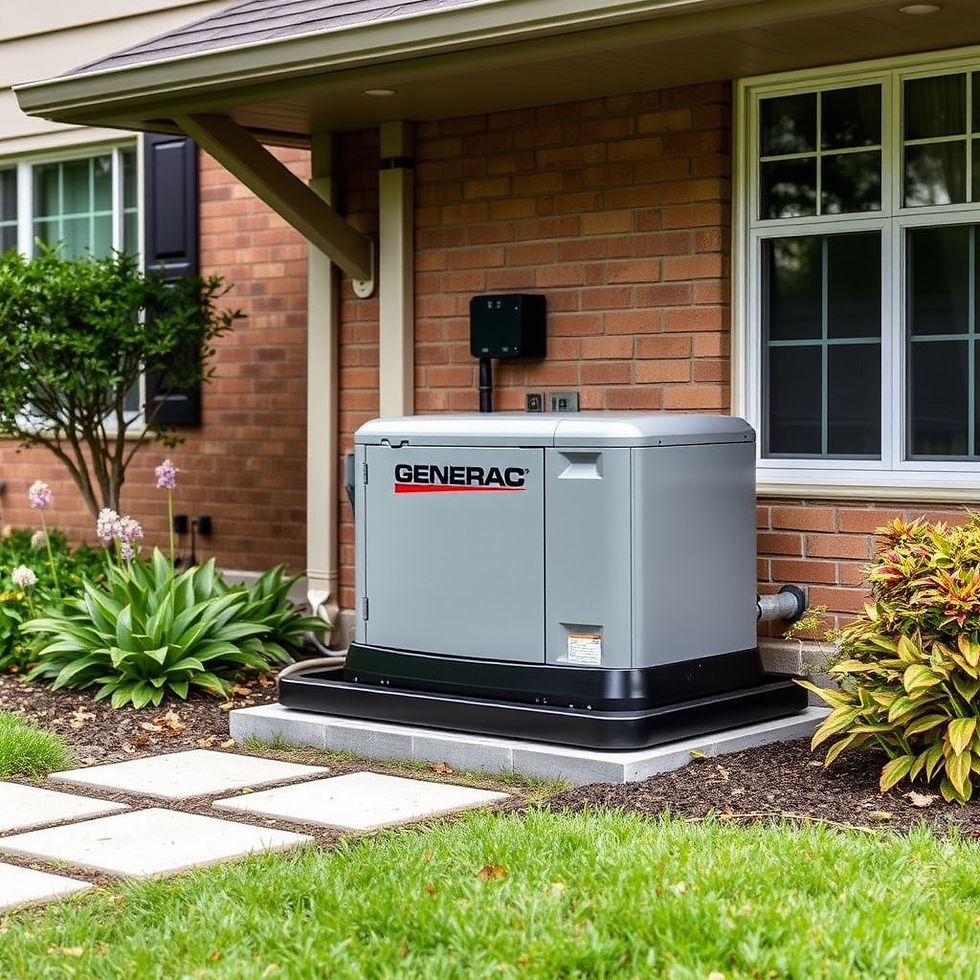Understanding Portable Inverter Generators
- safaa fahmy
- Sep 26
- 4 min read
When it comes to powering your devices on the go, whether for camping, emergencies, or just around the house, having a reliable power source is essential. I’ve spent quite some time exploring different options, and one solution that stands out is the portable inverter generator. It’s compact, efficient, and surprisingly quiet compared to traditional generators. In this post, I’ll walk you through everything you need to know about these handy machines, so you can make an informed choice for your portable power needs.
What Are Portable Power Solutions and Why Do They Matter?
Portable power solutions are devices designed to provide electricity wherever you need it, without relying on a fixed power grid. They come in various forms, but generators are among the most popular because they can power multiple devices at once.
Why should you care about portable power solutions? Imagine you’re camping deep in the woods, or there’s a sudden power outage at home. Having a dependable power source means you can keep your lights on, charge your phone, or even run small appliances. It’s about convenience, safety, and peace of mind.
Some common types of portable power solutions include:
Gasoline or diesel generators: Powerful but often noisy and heavy.
Battery-powered power stations: Quiet and clean but limited by battery life.
Portable inverter generators: A blend of power, efficiency, and portability.
Each has its pros and cons, but portable inverter generators have become a favorite for many because they strike a great balance.

How Portable Inverter Generators Work and Their Benefits
So, what exactly is a portable inverter generator? At its core, it’s a generator that produces AC power like traditional models but uses an inverter to convert the raw power into clean, stable electricity. This means it can safely power sensitive electronics like laptops, smartphones, and medical devices without risking damage.
Here are some key benefits I’ve found with portable inverter generators:
Quiet operation: They run much quieter than conventional generators, making them perfect for camping or neighborhood use.
Fuel efficiency: They adjust engine speed based on power demand, saving fuel and reducing emissions.
Compact and lightweight: Easy to carry and store, which is great for travel or emergency kits.
Clean power output: Safe for sensitive electronics, which is a big plus if you need to charge devices or run medical equipment.
For example, when I took a portable inverter generator on a recent camping trip, I was able to power my mini-fridge, charge my phone, and even run a small fan without any noise complaints from fellow campers.
If you want to explore a reliable model, check out this portable inverter generator that offers great performance and value.

Which is better, an inverter or a portable generator?
This is a common question, and the answer depends on your specific needs. Traditional portable generators are often more powerful and less expensive upfront, but they come with some drawbacks. They tend to be louder, heavier, and produce less stable power, which can be risky for sensitive electronics.
Inverter generators, on the other hand, offer:
Stable power output: Thanks to the inverter technology, they provide clean electricity.
Variable engine speed: They adjust power output based on demand, improving fuel efficiency.
Portability: Usually lighter and easier to transport.
Lower noise levels: Ideal for quiet environments.
If you need power for heavy-duty tools or appliances, a traditional generator might be better. But for everyday use, camping, or emergency backup where you want quiet, clean power, an inverter generator is often the smarter choice.
Here’s a quick comparison:
| Feature | Traditional Generator | Inverter Generator |
|-----------------------|-----------------------|-----------------------|
| Noise Level | Loud | Quiet |
| Fuel Efficiency | Lower | Higher |
| Power Quality | Less stable | Clean and stable |
| Portability | Heavy | Lightweight |
| Price | Usually cheaper | Slightly more expensive|
This table should help you decide which fits your lifestyle best.

Practical Tips for Choosing the Right Portable Power Solution
Choosing the right portable power solution can feel overwhelming, but breaking it down helps. Here’s what I recommend considering:
Power Needs
Calculate the total wattage of the devices you want to power. Add a buffer of 20-30% to avoid overloading the generator.
Portability
Think about how often you’ll move the generator. If you’re camping or traveling, weight and size matter a lot.
Noise Level
If you’ll be using it in quiet environments, opt for a quieter model like an inverter generator.
Fuel Type and Efficiency
Gasoline is common, but some models use propane or dual fuel. Consider fuel availability and storage.
Run Time
Check how long the generator can run on a full tank. Longer run times mean less refueling.
Safety Features
Look for features like low-oil shutoff, overload protection, and spark arrestors.
Budget
Balance your needs with your budget. Sometimes spending a bit more upfront saves money and hassle later.
For example, if you want a generator mainly for camping trips, a lightweight, quiet inverter generator with a decent run time is ideal. But if you need backup power for your home during outages, a more powerful traditional generator might be necessary.
How to Maintain Your Portable Power Solution for Longevity
Once you have your generator, keeping it in good shape is key to reliable performance. Here are some maintenance tips I follow:
Regular oil changes: Check the oil level before each use and change it as recommended by the manufacturer.
Clean air filters: Dirty filters reduce efficiency and can damage the engine.
Fuel care: Use fresh fuel and add stabilizers if storing the generator for long periods.
Run it periodically: Even if you don’t need it, run the generator every month for about 30 minutes to keep parts lubricated.
Store properly: Keep it in a dry, cool place and cover it to protect from dust and moisture.
Following these simple steps can extend the life of your generator and ensure it’s ready when you need it most.
I hope this guide helps you feel more confident about choosing and using portable power solutions. Whether you’re heading out on a camping adventure or preparing for unexpected outages, having the right generator can make all the difference. Remember, a portable inverter generator might just be the perfect balance of power, portability, and peace of mind you’re looking for. Happy powering!



Comments